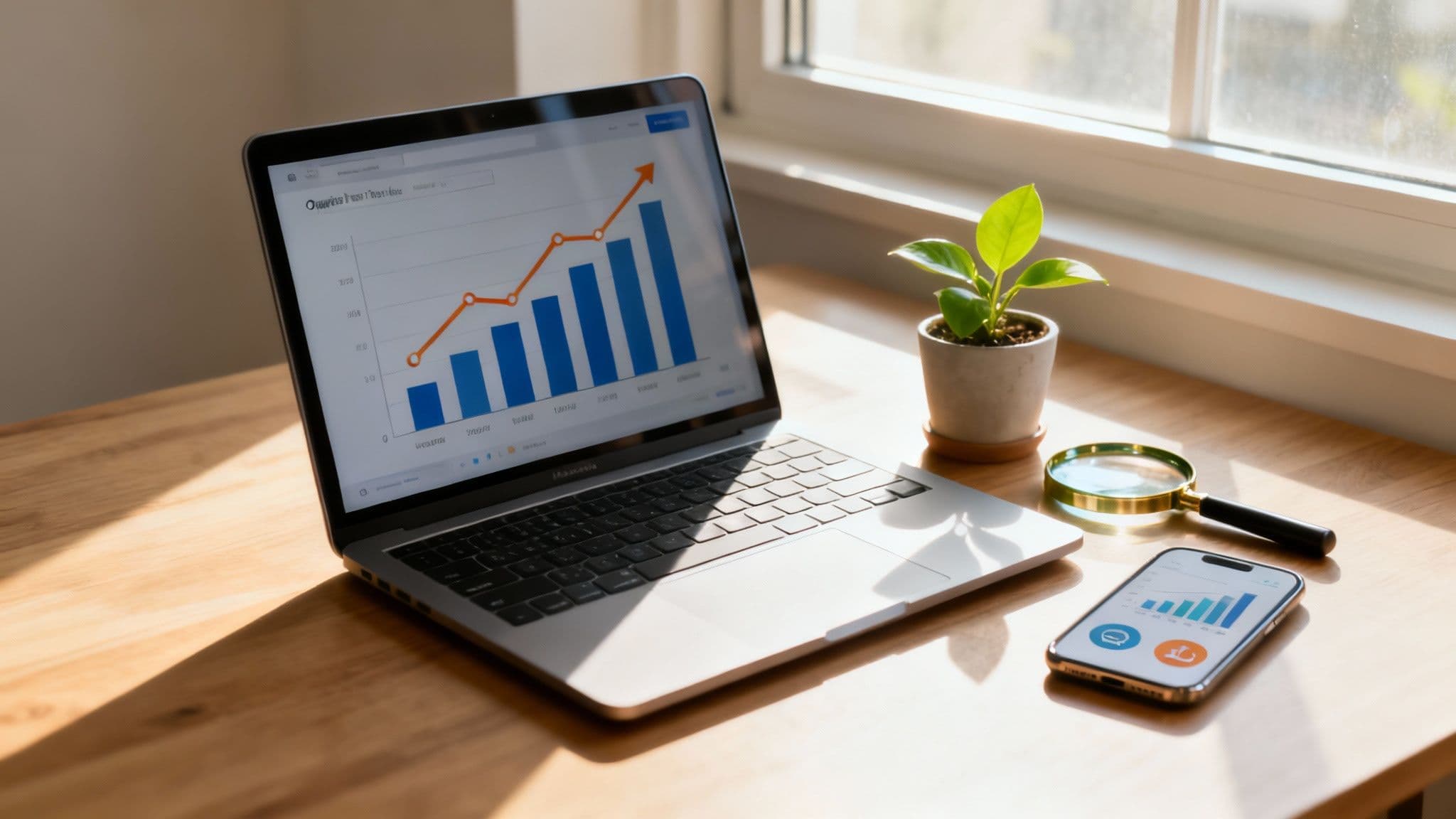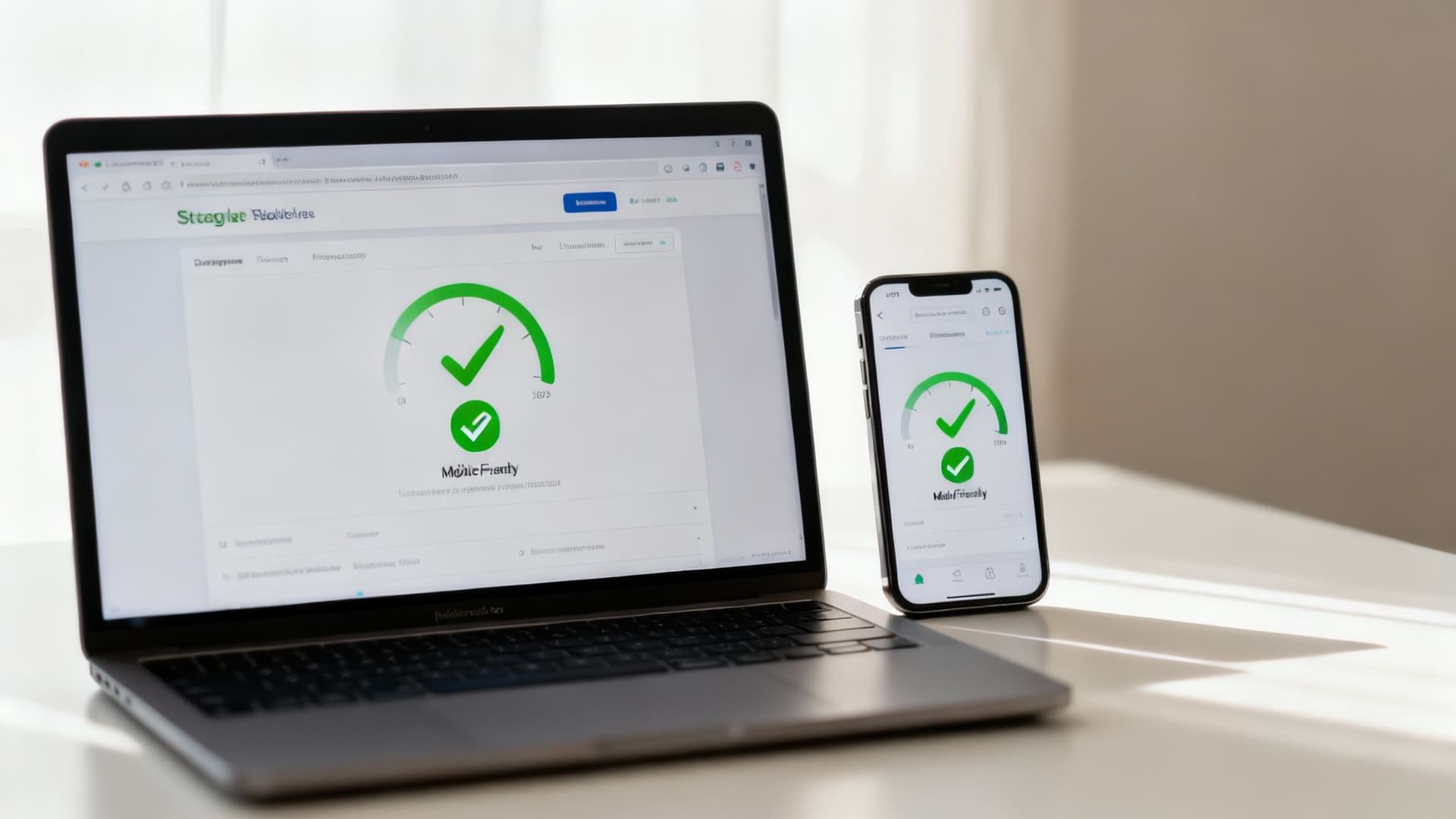Learn how to increase organic traffic to website with proven SEO, content, and authority-building tactics designed to boost your search visibility and growth.
October 25, 2025 (1d ago)
How to Increase Organic Traffic to Website
Learn how to increase organic traffic to website with proven SEO, content, and authority-building tactics designed to boost your search visibility and growth.
← Back to blog
Increase Organic Website Traffic: Proven SEO Tactics
Summary: Proven SEO, content, and authority-building tactics to increase organic website traffic, improve rankings, and convert visitors into leads.
Introduction
If you want more organic traffic, focus on two things: create helpful content that solves real problems, and make sure search engines can find and rank it. Nail those and everything else becomes easier.
The Real Foundation of Organic Website Traffic

Before we get lost in tactics and jargon, remember this: lasting growth is built on trust—your audience’s trust and the search engines that index the content they value. It all starts with knowing your audience inside and out so you can create content that truly answers their questions.
Focus on User Intent Over Volume
Chasing big search volumes rarely works if the intent doesn’t match your goals. Someone searching for “digital marketing stats” is in a different place than someone searching for “hire digital marketing agency.” Match content to intent:
- Informational: Answer questions with how-to guides and tutorials.
- Navigational: Help users find the site or page they want.
- Transactional: Create pages for people who are ready to buy.
- Commercial investigation: Provide comparisons, reviews, and buying guidance.
Aim for intent-first topic selection—keywords follow naturally from that. For a deeper how-to, see this guide on increasing organic search traffic that converts: https://llmrefs.com/blog/how-to-increase-organic-search-traffic
The Blueprint for Finding Topics
Start with the questions customers ask daily. Treat keyword research like market research: you’re listening to the exact language your audience uses. Once you have their problems mapped, validate phrases in keyword tools and the “People also ask” box in Google. Use that to build topic clusters and cornerstone assets that map to each stage of the buyer’s journey.
Crafting Content That Attracts and Converts

Great content is useful content—resources people return to and share. That’s what builds trust and earns rankings. Instead of stuffing keywords into short posts, aim for comprehensive, authoritative pieces that solve real problems.
Build Cornerstone Content Assets
Cornerstone or pillar pages are deep, well-organized guides that serve as hubs for more specific posts. They:
- Signal authority to search engines.
- Attract backlinks more easily.
- Keep users engaged longer.
For example, rather than ten short posts about email marketing, create one extensive guide and link from it to the narrower posts. Consider adding interactive elements—like an embedded estimator—to increase practical value and conversions (for instance, include an estimator for campaign ROI or lead value).
Structure Content for Humans First
People scan. Break content into short paragraphs, use clear subheadings, and include bullets, tables, and examples. Make your content effortless to consume. For comparison-heavy topics, use a table that highlights features, pricing, and integrations. Embed an interactive tool when it answers a user’s question immediately.
Weave in Long-Tail Keywords Naturally
Long-tail keywords like “how to increase organic traffic for a new ecommerce site” have lower volume but stronger intent. Use them naturally in subheadings and Q&A sections. Look at Google’s “People also ask” and related searches for inspiration.
Studies show top organic results earn a substantially higher share of clicks, and moving up a position can meaningfully increase CTR1. Small ranking gains add up fast when your pages are aligned with intent and user needs.1
On-Page SEO: Your Direct Line to Google
On-page SEO is the housekeeping that tells search engines what your content is about. Titles, headers, meta descriptions, and internal links act as signposts for both humans and bots.
Titles and Meta Descriptions That Get Clicked
Your title tag should include the main keyword and spark curiosity. Don’t be afraid of descriptive headlines. Your meta description is a 160-character elevator pitch—summarize value and add a clear call to action.
- Be specific about what the reader will learn.
- Use action-oriented verbs: “Learn,” “Discover,” “Find out.”
- Include the keyword to reassure searchers they’ve found a match.
Create a Clear Content Hierarchy
Use one H1 per page, H2s for major sections, and H3s for subpoints. This structure helps readers scan and helps search crawlers understand your page’s hierarchy.
The Power of Smart Internal Linking
Internal links help crawlers discover pages, pass authority between pages, and guide visitors to next steps. Link from relevant high-traffic posts to newer, conversion-focused pages. Use descriptive anchor text.
For example, link a blog post about project management tools to your product or comparison page to guide readers toward conversion. Add internal links to related resources, such as your keyword research guide or cornerstone articles (for example, /blog/keyword-research and /blog/cornerstone-content).
You can also model the potential return before investing in a content cluster with tools that estimate campaign value, like the Email List Value Estimator.
Getting Technical SEO Right (Without the Headache)

Technical SEO is about letting search engines find, crawl, and understand your site. If Google can’t access your content, it might as well not exist.
Make Your Site Fast and Mobile-Friendly
Page speed is a ranking factor, and slow pages lose visitors quickly2. Mobile-first indexing means Google primarily uses the mobile version of a page for ranking3. Start with:
- Running PageSpeed Insights and acting on key recommendations.
- Compressing and properly sizing images.
- Enabling caching for repeat visitors.
- Testing mobile usability with Google’s mobile-friendly test.
Give Search Engines a Clear Roadmap
Use clean, descriptive URLs (for example, /blog/technical-seo-tips), and publish an XML sitemap so crawlers don’t miss important pages. A clear site structure makes indexing much more effective.
Hunt Down and Fix Crawl Errors
Use Google Search Console to monitor coverage reports and fix 404s or server errors quickly. Regular maintenance signals to search engines that your site is healthy and user-friendly.
If you’re planning a site redesign or migration, document redirects and test thoroughly. Model potential agency or project costs with an estimator like the Consulting Rates Estimator before committing.
Building Authority and Earning Quality Backlinks

Backlinks are votes of confidence from other sites. High-quality links signal authority and help rankings. Today, earning links means producing genuinely valuable assets people want to reference.
Create Genuinely Linkable Assets
Linkable assets are content pieces that offer depth, originality, or utility:
- Original research or case studies that become primary sources.
- Comprehensive “ultimate” guides that act as go-to resources.
- Free interactive tools that provide immediate, shareable value.
Embed useful tools to turn articles into practical resources. For example, add a business tool like the Business Valuation Estimator to a finance article to help readers get instant, personalized answers.
Make Tools Work for Link Building
Tools are inherently useful, and useful resources earn natural links. A practical embedded calculator or estimator turns a passive post into an interactive destination users want to share.
Strategic Outreach and Relationship Building
When you have a linkable asset, reach out selectively. Identify sites that already reference similar content and send personalized messages explaining how your resource benefits their readers. Relationship-driven outreach leads to higher-quality links and better long-term results.
What the Future of Search and AI Looks Like
Search is changing fast. AI-driven answers and zero-click results are reshaping how users find information. That doesn’t mean organic search is dead—organic still drives a majority of website traffic, and clear, authoritative content remains essential4.
How to Thrive in a Zero-Click World
To adapt, create experience-driven content that’s easy for AI and voice assistants to parse:
- Use clear question-and-answer subheadings.
- Add structured data (schema) so search engines understand your content.
- Demonstrate real-world experience and authority.
Interactive Tools as a Competitive Edge
Interactive tools provide immediate value and help you stand out. Instead of only explaining a concept, offer a tool that answers the user’s question with personalized results. For example, embed a calculator that estimates shipping savings or campaign ROI—this both engages users and attracts links. Try the Logistics Shipping Cost Predictor to illustrate impact in logistics-focused content.
Adapting to future search means enhancing what already works: better content, better experiences, and clearer signals for search engines.
Frequently Asked Questions
How quickly will I see organic traffic improvements?
SEO is a medium- to long-term channel. You can see small wins (technical fixes, meta updates) in weeks, but meaningful organic growth from content and authority often takes 3–12 months.
What should I fix first on my site?
Start with crawlability and performance: submit an XML sitemap, fix 404s, and improve page speed. These technical fixes unlock the value of new and existing content.
What content performs best for driving conversions?
Cornerstone guides, in-depth tutorials, and interactive tools that solve a specific problem tend to attract both traffic and qualified leads.
Ready to Build Your Own Tools for Free?
Join hundreds of businesses already using custom estimation tools to increase profits and win more clients